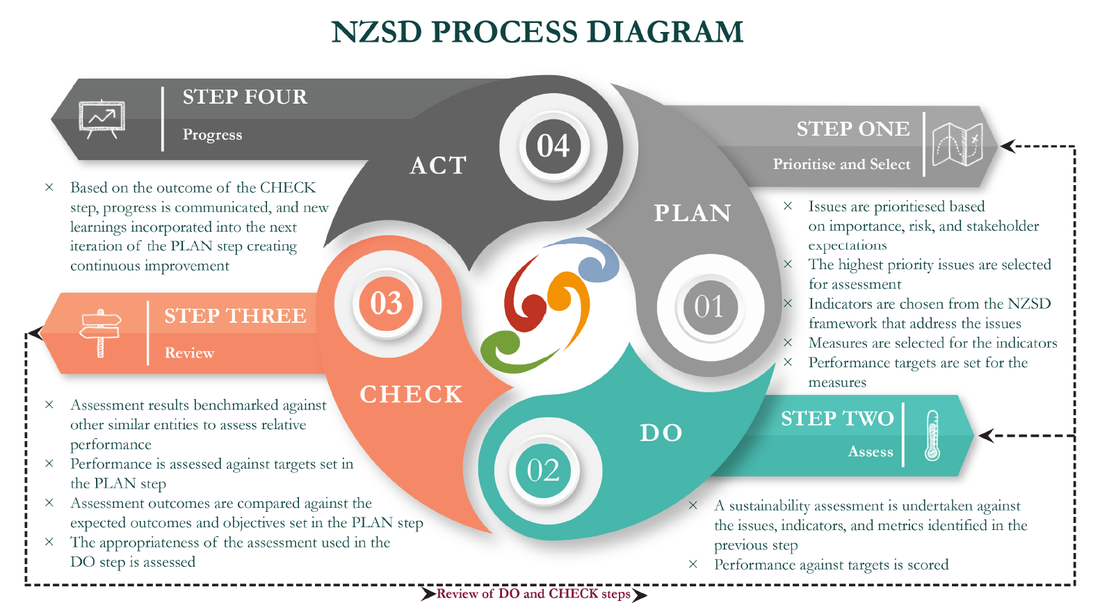Steps for Developing a sustainability assessment
and reporting response
The main steps involved in developing a sustainability assessment and reporting response are presented here.
|
1. PLAN (Prioritise and Select) The first step is to develop a framework which sets out priority issues, objectives for those, and indicators and metrics that can be used to measure progress. The NZSD Framework has been developed to guide this. Targets may also be set. |
|
|
2. DO (Assess) Undertake a sustainability assessment of the priorities using the indicators and metrics from the PLAN step. Tools that capture data will be needed to facilitate this. The NZSD Project has developed a range of tools across its sectors (see case studies). |
|
3. CHECK (Review)
Assess results of assessment against benchmarks and targets identified in the PLAN step. Also, assess the appropriateness of the assessment used in the DO step. Communicate the outcome of the CHECK step, and incorporate new learnings into the next iteration of the PLAN step for continuous improvement.
4. ACT (Progress)
Communicate the outcome of the CHECK step, and incorporate new learnings into the next iteration of the PLAN step for continuous improvement.

